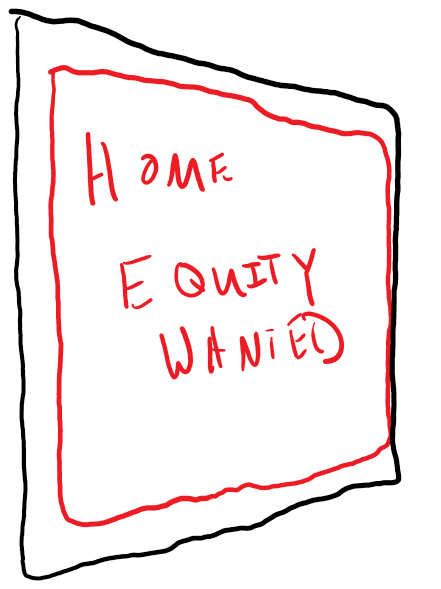Inflation and home prices have made the news in spades this year. In Longmont, CO, over a dozen homes have sold for well over $100,000 in asking price, and that was after the list price for properties had increased by double-digit percentages since January. In other news, inflation continues to rear its head, with the CPI this month reflecting a 5% trailing twelve-month increase in inflation, with consumer discretionary sectors continuing to lead the pack (vehicles, travel, entertainment, etc.) All of this has led to a curious confluence: The pullback of banks from offering home equity lines of credit, depriving otherwise house-rich homeowners of the opportunity to utilize their equity for assorted improvements or changes to their homes. This week we take a look at the risks the banks are looking at and help you navigate the current home equity puzzle.
Home Values
As we just mentioned, home prices have skyrocketed. From May of 2020 to May of 2021, national home prices increased by 13%. Regionally, the value of homes in Boulder County previously in the mid $300,000-$400,000 range have spiked listing prices into the $500,000 range, while fierce competition for housing has left many new homebuyers out of the market entirely with 5% down offers being uncompetitive against cash rivals and those who are selling existing properties to finance new acquisitions. Ultimately, homes are then selling for easily $50,000 if not more over list price, along with highly competitive offers including leasebacks and waived inspection requirements. All of this has begun to leave the financial industry nervous: while low supply and high demand can easily account for much of the sudden spike in home prices, banks are haunted by the specter of 2008 and the inflated home values that suddenly vanished during the great recession, leaving them with large portfolios of underwater mortgages and a lack of collateral to make up the difference. While primary mortgage lenders have kept up the competition with fiercely low interest rates and generous financing terms, secondary mortgage lenders for home equity lines of credit (HELOC) are withdrawing, with major names such as J.P. Morgan Chase and Wells Fargo closing off the applications for new Home Equity Lines of Credit for the time being. While some smaller banks are still offering lines, large institutions reducing their exposure to a home price correction is a major red flag on the national level for home valuations. Whether the valuations will hold or recede is to be determined.
The Ghost of Inflation
Inflation is traditionally viewed as an invisible thief, robbing the value of the hard-earned dollar from those who hold it. Over the past decade-plus, inflation has rested at a low 2%-2.5% range, as a result of quantitative easing by the government in addition to low interest rates and an otherwise swiftly growing economy with a Federal Reserve lacking the will to pump the brakes to slow it down. As the pandemic hit, we saw continued worries about inflation occurring during the duration. Yet, now 16 months into the experience, we have only begun to see inflation over the past few months, and specifically in the areas of high consumer demand. Used vehicles, travel methods (air, rental cars), and other goods of delayed gratification during the pandemic have seen an enormous spike in demand. Ultimately, it is likely that we will see these areas of inflation recede as both pent-up demand declines and suppliers of these goods and services expand their inventory and capacity to meet the need. However, inflation is a positive for those who have low rate mortgages and existing home equity lines of credit, since those rates do not typically adjust for inflation and reflect the current federal reserve rate plus a profit margin; being an ultra-competitive market, this means that so long as inflation exceeds the existing rate of interest charged on those low rate debts, that consumers are getting ahead as the cost of their mortgage declines in terms of dollar value. Conversely, this also means that banks are hesitant to offer HELOCs at low rates, since the profit margin is low or even negative, and the risk of future rate raises would increase the risk of their credit underwriting for those consumers who took out the loans on the assumption that rates would stay low indefinitely.
The Home Equity Credit Desert
Ultimately, we will likely see a decline in the availability of HELOCs until one of a few events occurs:
- The federal reserve raises the reserve rate and as a consequence, the cost of borrowing increases to the point of inflation or higher.
- Inflation declines and the margin and risk for home equity lending improves.
- Inflation in home prices stabilizes and evidence that the recent price increases are here to stay becomes more reassuring to the banks.
For those consumers trapped outside of a home equity line of credit who need one, they will likely need to turn to smaller regional or local banks and credit unions for access. It is noteworthy, however, that a HELOC is a risky proposition since many HELOCs are adjustable-rate loans and while the current low rate environment can be tempting, borrowers should ensure they have ample free cash flow to account for any sudden spikes in the interest rate that could leave them holding the loan bag in a pinch.


Comments 1
Timely as always. Thanks Mr. Yerger.